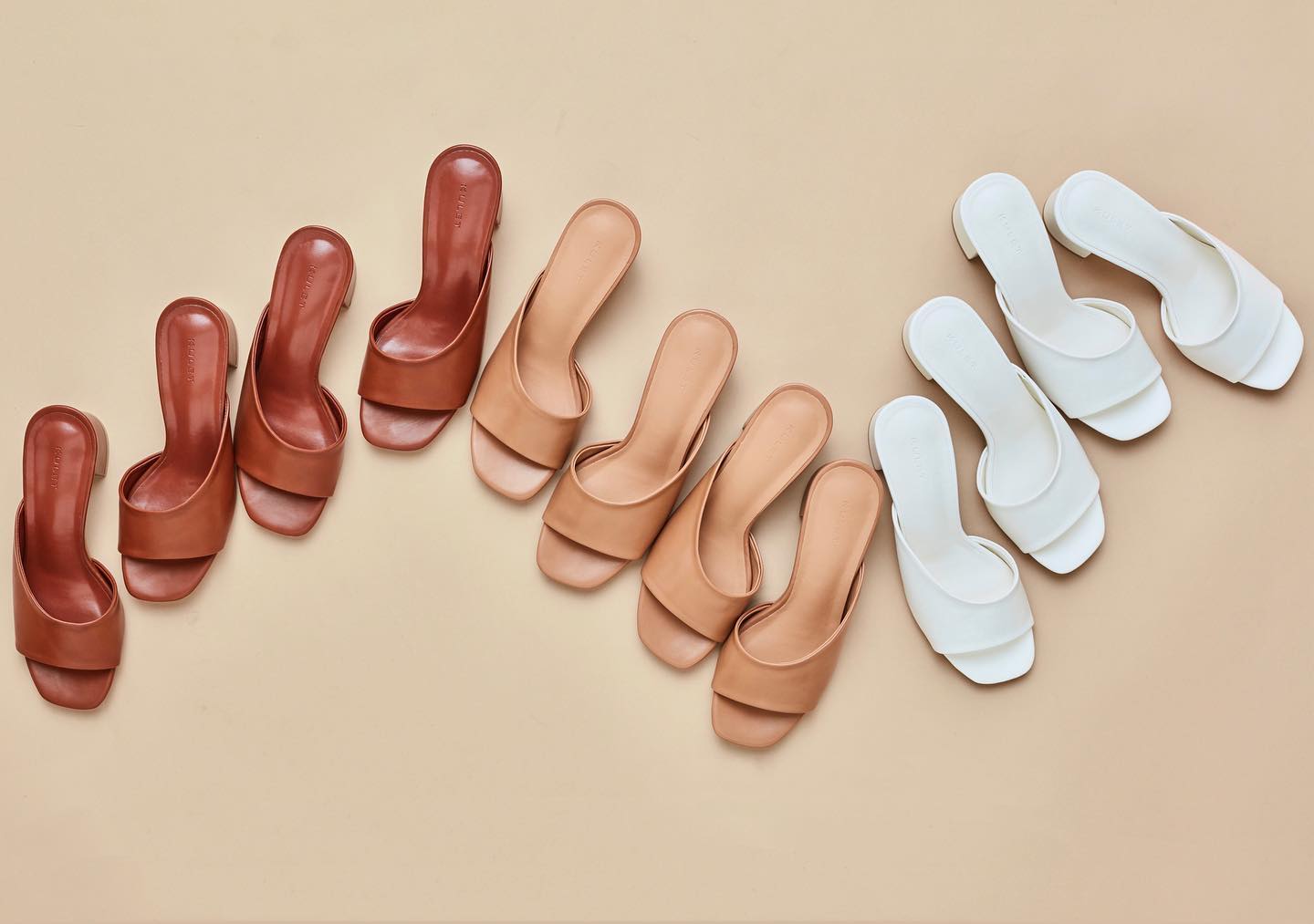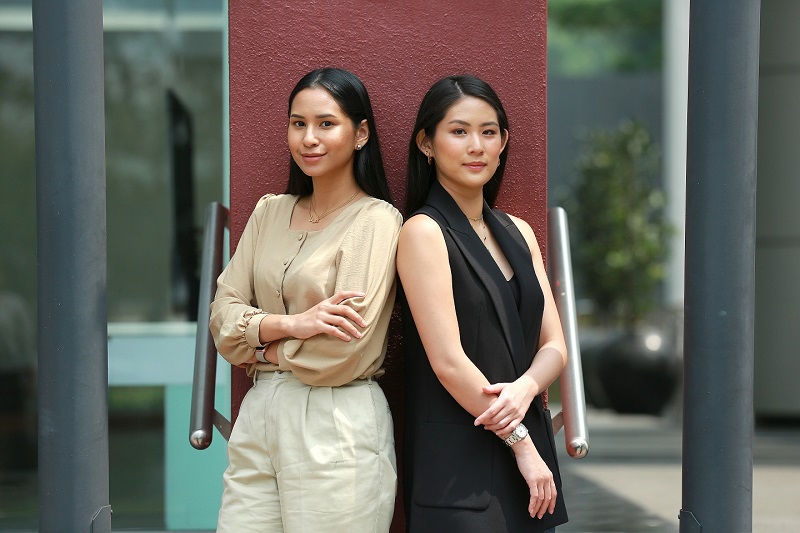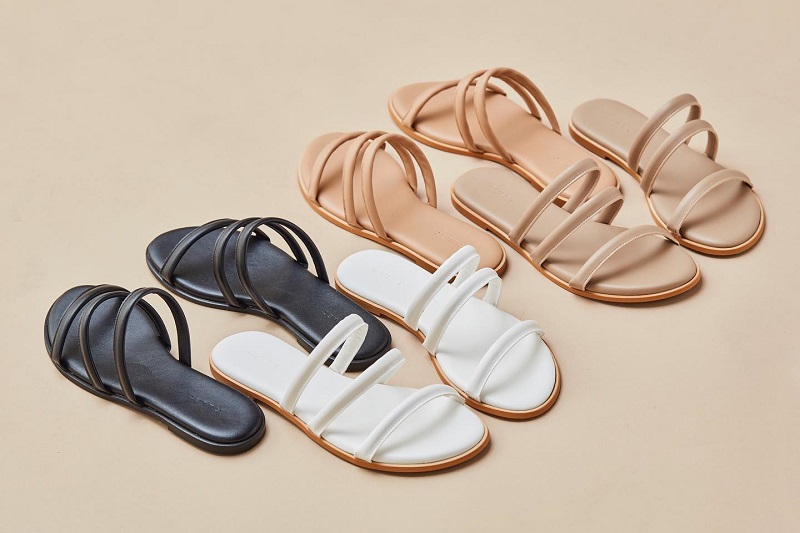
Aina and Kang release a collection every three or four months, with two to six designs each (Photo: Kulet)
Aina Syahirah Azlin and Julie Anne Kang met in primary school but it was not until college that their friendship blossomed. After graduating, both joined an online retail start-up where they discovered that they worked well together. “You can be friends with many people and get along but if you don’t know how to work with each other, it’s hard to run a business together,” says Kang.
It was Aina who came up with the idea to start a footwear company that filled a gap in the market. “We’ve always loved the same type of shoes — sandals with really simple designs. We wanted to give people what we love,” she says.
The result is Kulet, a brand that focuses on providing versatile sandals and heels. “We try to cater for a variety of skin tones and it’s something that we think is very important because you really want shoes that go with your entire outfit or any outfit. Something you can always wear — that neutral shoe,” explains Kang.
kulet.jpg

Their nude and neutral concept influenced their brand name, Kulet (kulit means skin in Malay). “We don’t use real leather. Many people mistake the name to mean we use real leather. Actually, Kulet represents the tones we use, which are skin tones,” says Aina.
Having no experience in the shoe industry, Aina and Kang had to learn from scratch. “We spent a good four to five months purely just researching and thinking about all sorts of things before we even took any big steps. It was a lot of planning, researching and deciding if this was what we wanted to do and how we wanted to do it,” reveals Kang. The process included talking to different manufacturers and finding those that were on the same wavelength with them in terms of quality and design.
What Kang and Aina lacked in shoe-related knowledge, they made up for in business know-how — gained from their experience working at the start-up — including the ability to troubleshoot. “If you’ve never been in that position, you would not expect the kind of troubles that might arise. So, having been in that position previously helped us to look forward and anticipate what might happen or what could be an issue,” says Kang.
70698832_2368555196806561_5522710373603475456_o.jpg

Once they secured the right manufacturers and confirmed their initial designs, Kulet went into production. Aina and Kang launched the first collection on their website in October 2016. “Not knowing if people would be willing to accept what you want to offer them — I think that was the hardest thing we had to deal with,” admits Aina.
Kulet held its first pop-up bazaar at the Über-chic Art Printing Works in Kuala Lumpur soon after the launch and the response removed any doubts the duo had — their stock sold out within a month.
A considerable amount of time is needed to create one of the brand’s designs, which means extensive planning is required. “We actually have to start out months in advance because shoes take a long time to make, even with the sampling process. Even though the designs are simple, we’re very particular about a lot of things that go into our shoes and that takes a long time to work out. For example, a design that we like may not be comfortable to wear.
“So, the tweaking has to go through a few sample processes, which can take up to two months. Once we are happy with the result, we will go through the production process and that can take a few months before we receive our products. Then we photograph them for our website before the launch,” explains Kang.
Aina and Kang release a collection every three or four months, with two to six designs each. “One of our biggest challenges is getting people to understand that we don’t have a constant collection. It is more like a capsule collection,” Aina points out.
This means that once a range of products sells out, it would not be reproduced. However, the design might return in new colours or with additions — thus, no two releases are ever the same. “Our price point is quite accessible, so we want to give our customers a chance to feel a bit more exclusive. Not everybody will have the shoes you have,” Kang adds.
Aina and Kang plan to continue producing footwear with versatile designs in neutral shades that suit any ensemble. They prefer that Kulet remains an online platform as it allows them to have more control over their brand image. However, they will continue to attend bazaars during festive seasons and prominent shopping periods so that their customers can personally check out their new releases.
This article first appeared on Oct 7, 2019 in The Edge Malaysia.


